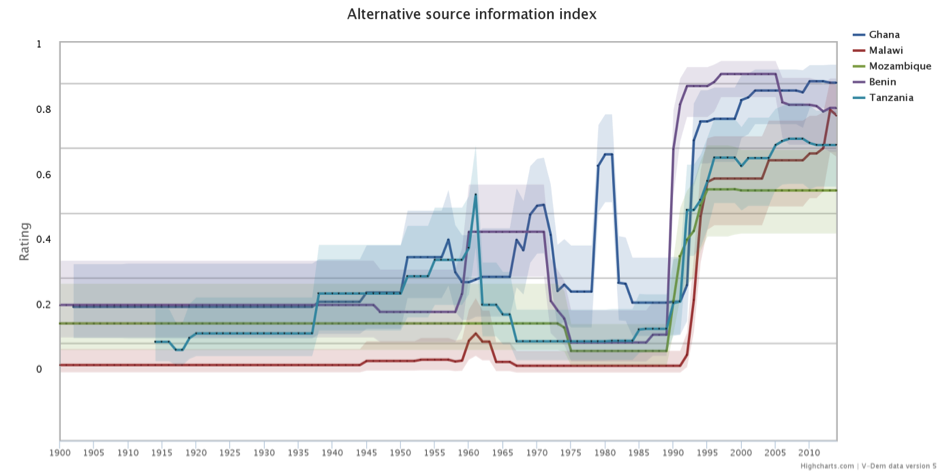Alternative Sources of Information in Sub-Saharan Africa
By: V-Dem Staff
Feb 15, 2016
Historical and contemporary trends in access to alternative sources of information in the five countries share many commonalities. All countries experienced low levels of access to information (around 0-0.4) prior to decolonization in the 1960s. Most of the countries, except Mozambique and Malawi, witnessed remarkable expansion of an unbiased and critical media in the early post-independence years. The gains, however, were reversed fairly quickly in Tanzania and later in the early 1970s also in Benin and Ghana. The 1975-1989 period generally marks the lowest levels of freedom of information with the consolidation and political stagnation under one-party rule, personal dictatorships or military regimes in the region. Ghana stands out as an outlier, with its score spiking to over 0.6 in the early years of Rawlings’ populist regime. However, later on the situations worsens and the low scores up until the early 1990s suggest that the media in Ghana was not critical of the regime and was not offering a wide range of political views during this time.
A general revival of freedom of information begins with the “second liberation” of third wave transitions in Africa that began in Benin in 1990. Since the beginning of the 90s, all countries reach a level of .8 on the index, except Mozambique which receives a somewhat lower score.


